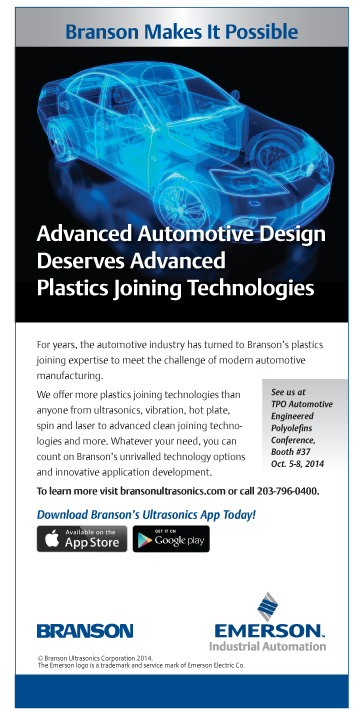Clean and Cost-Saving: New Developments for Meeting Medical Molding Challenges
Molds for threaded caps, for instance, can benefit from a number of features for increasing speed and lowering costs
Previous Article Next Article
By Alan Hickok
Roehr Tool Corporation, Hudson, Massachusetts, USA
Clean and Cost-Saving: New Developments for Meeting Medical Molding Challenges
Molds for threaded caps, for instance, can benefit from a number of features for increasing speed and lowering costs
Previous Article Next Article
By Alan Hickok
Roehr Tool Corporation, Hudson, Massachusetts, USA
Clean and Cost-Saving: New Developments for Meeting Medical Molding Challenges
Molds for threaded caps, for instance, can benefit from a number of features for increasing speed and lowering costs
Previous Article Next Article
By Alan Hickok
Roehr Tool Corporation, Hudson, Massachusetts, USA

Figure 1: Image of a cap with anti-rotation lugs, which can be eliminated by using collapsible cores

Figure 2: Drawings of a Roehr Tool “DT” collapsing core mold vs. unscrewing mold design

Figure 3: Z-Series locks (from Progressive Components), engineered and independently tested to outperform other styles, ensure quality while also gaining cost savings through mold efficiency and less maintenance.

Figure 4: Traditional collapsing core mold staged with hydraulic cylinders

Figure 4: Traditional collapsing core mold staged with hydraulic cylinders

Figure 5: Plate locks on a mold

Figure 6: A collapsing core mold using high-performance locks (plate locks for staging), running in an electric molding press
Injection molders of plastic medical parts face the challenge of meeting high quality and cleanliness requirements, while keeping costs low and striving to advance sustainability initiatives.
Part of the challenge is the volumes associated with many medical parts. Because many medical parts are disposed of after a single use, their annual volume requirements are usually quite high. This means large, high-cavitation molds with long life expectancy. The challenges in making the molds then become: streamlining the overall size and simplifying the mold for easy set-up and molding operation, tight tolerance fits, and high performance steels and components. Additionally, the mold must be paired with the latest advancements in injection molding machines. The overall system needs to eliminate hydraulics as well. Optimization in these areas will ultimately lead to reduced cycle times and improved efficiencies.
This paper will cover a few recent advancements in the injection molding industry that help molders achieve their goals for quality, manufacturing cost, and energy efficiency. An example of a threaded medical cap will be used to illustrate how advancements can help improve molding.
Meeting Medical Molding Challenges
Thread removal
Opportunities for improvement begin with the plastic part. Careful review of the part design is critical and will yield ways to reduce costs. Changing the part design can also impact mold design, which collectively can lead to savings from such aspects as part weight, cycle time, mold size, press size, and so on.
Take, for example, a medical cap that is designed for a conventional unscrewing-style mold for removing the part’s threads. Conventional unscrewing requires the use of anti-rotation lugs in the bottom of the cap, which causes the part’s wall thickness to be greater than needed for the cap to function correctly (Figure 1). Typically this style of mold also requires hydraulics for the unscrewing motion plus racks and gears to drive the rotation, which increases the size of the mold and the required press.
By converting to a collapsing core-style mold these concerns can be eliminated. Collapsing core technology has been around for over 30 years and is a very viable solution for molding caps. Recent advancements in the technology have included the introduction of mechanical-style collapsing cores. These mechanical cores provide molders with a solid, consistent means of collapse along with design flexibility and increased size range. The mold becomes much simpler (Figure 2) and no longer requires gears, racks, or hydraulic cylinders.
There are many other benefits to mechanical-style collapsing cores, and each will help with cost reduction and energy savings. In summary, these include:
- reduced part weight, typically 10-30%, depending on part design and requirements;
- cycle time reduction (30-50% is not uncommon);
- capacity gains (can result in need for smaller cavitation);
- simplified mold design for fast setup;
- faster maintenance;
- a smaller press; and
- cleanroom friendliness—no hydraulics.
Mold component advancements
Mold performance and mold life are two critical areas of concern when molding medical parts, as the volumes are usually very high and a mold’s life expectancy quite long.
There have been developments in the mold actuation and alignment areas that help with improving mold performance and efficiencies. This is critical to part consistency/quality and machine utilization, which impacts profits and energy usage.
Continuing with the example of the medical cap, following are details about some specific products that have been developed that enhance the performance of molds, like collapsible core tools, and support the needs of medical molders.
High-performance parting line locks
Parting line locks are one of the most important components in a mold, as they bring the two halves of a mold into alignment before the mold is clamped up. In a molding machine, things like platen deflection, mold sag, temperature variance between mold halves, etc., can cause the mold to be out of alignment. The locks are designed as steel-on-steel shut-offs with zero taper, and they are the last line of defense to ensure alignment before the mold is put under tonnage. Protecting the parting line with locks lengthens the life of a mold by protecting interfacing core pins, cross parting line shutoffs, and slide locks, and ensures molded component accuracy.
These benefits make parting line locks a critical component for medical molders who must guarantee part quality and consistency to prevent part defects that could harm the patients who will use them.
Knowing how critical the components are to the function of the mold and assurance of part quality, having locks that last longer are a great benefit. A recent development in parting line locks is adding years to the useful life of the product. The new locks have been engineered to outperform other styles (Figure 3). This is achieved through a combination of engagement geometry and particulate capturing, as well as materials and treatments.
The performance of these locks was tested against 21 other designs by an independent lab. A test fixture was created that mimicked a mold that is out of alignment—a situation that would challenge the locks. The end result was locks failing at less than 100,000 cycles. The new high-performance locks lasted for more than two million cycles (Figure 3). This level of performance means quality can be assured while also gaining cost savings through mold efficiency and less maintenance.
Plate locks
Medical cap molds often require the use of two-stage ejection molds. There are many ways to create the staging action, and molders understand they save money by having the least-complicated mold setup and procedures possible. Often hydraulic cylinders are used and mounted to the side of the mold, as was common for old styles of collapsing core molds (Figure 4). These work well but add complexity because they depend on the press for function and timing. Running any mold out of sequence can have disastrous results and cause thousands of dollars in mold damage and downtime. For medical molders, having hydraulic cylinders in the molding environment should be avoided however possible.
There is a new style of mechanical plate locks which eliminates hydraulic cylinders and simplifies the mold sequence. (Figure 5) They are mounted on the outside of the mold and work off of the press knock-outs, which makes set up much easier and more reliable. Since they are externally mounted, replacement or repair can be done in the press, limiting down time.
This new design is a highly wear-resistant, robust design that solves many application problems. They can be set to time the mold plate sequence, multiple ejector plates, slides, and many other applications. They are only limited by the creativity of the mold designer. By reducing complexity and assuring a proper sequence, there is cost savings through increased mold efficiency and less maintenance.
Bar locks
Since medical molds are typically large, sequencing the mold means extending large pieces of steel away from the platens, leaving them with less support. This condition exists for molds such as large stripper plate or stack molds and causes heaving, with loads transferred to the leader pins alone, and they can’t handle the weight. As a result, sagging of the plates occurs, bringing early wear of components and downtime of the mold.
One solution for this in the industry is to use bar locks that extend across the mold to support mold sections when extended away from the platen. They are bars mounted along the side of the mold, guided by wear plates in each plate section.
Until recently, a standard or configurable solution for bar locks has not been available in the USA. The new bar locks cover a wide range of sizes and lend themselves uniquely to precise alignment over a long travel length and multiple plates. They also serve the purpose of taking the weight off of the leader pins to precisely align plates to shutoffs or to align the two halves of large molds. Since many medical molds involve stripper plates that are very large, there is now a long-lasting solution that will accommodate these mold sizes.
Electric molding presses
Electric injection molding machines have existed in the industry since the mid-1980s. For a long time they were considered a high-cost alternative to hydraulic machines. However, through continued advancements and reduction in price premiums, the electric presses are beginning to become the preferred options for many molders.
For medical molders, the initial draw is to the cleanroom benefit by eliminating hydraulics. The additional benefits of accuracy, speed, and energy consumption make them the perfect fit for most applications.
By running a medical cap in an electric press, the additional gains, beyond cleanliness by removing hydraulics, are significant. It begins with faster mold start-up and time to stabilize processing, as there is no waiting for oils to get up to temperature. Cycle-time reduction comes from faster injection speeds, quicker clamp movement, and faster acceleration/deceleration. The part quality also benefits from the precision movement and positioning of the electric press. Cost savings in the molding room are generated by less energy consumption (30-70%) and less maintenance.
Overall, electric molding machines provide benefits targeted directly to the needs of medical molders by offering increased accuracy and speed along with reduction in energy use and elimination of hydraulics.
Conclusion
The needs of medical molders are driving suppliers to continue to develop new products that in many cases are raising the bar across the entire industry. The innovations mentioned in this paper are only a few examples of how vendors are working to understand the needs of the end customer.
Considering the example of a medical cap, this paper illustrates the substantial benefits possible in part quality, cost savings, and energy efficiency. By converting to a collapsing core mold, using long-life and mold-simplifying components, and running in an electric press (Figure 6), the molder can achieve a cleanroom capability while running a more efficient mold that makes better quality parts at reduced costs.
To learn more about the technologies covered in this ANTEC 2014 paper, use the company’s general email address, information@roehrtool.com.

